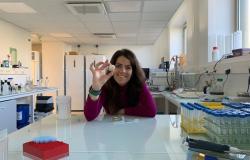
The Calvados Departmental Energy Union manages public lighting in 454 municipalities and 10 intermunicipalities in Calvados. And the Union is now proposing that communities adapt lighting so as not to disrupt biodiversity. Interview with Alban Raffray, General Director of Services at SDEC.
You have put in place the dark framework of Calvados. Can you tell us what this involves?
The black frame is a different approach to lighting to have what we call differentiated management. This involves integrating concerns about respect for biodiversity into our projects. We know that there are ecological continuities in the territory to be respected, that there are laws of biodiversity, fauna, flora. And the idea is that our impact with lighting is as minimal as possible on this biodiversity. To do this, we sort of mapped the territory in the form of issues where we identified where the ecological continuities and the issues in terms of biodiversity were located. We determine technical requirements that allow us to adapt the lighting to try to have the least impact on the environment.
How does this translate on the ground?
We are also aware that today species are in danger, some with reproductive problems, etc. This results in lighting which will evolve in terms of technique, with quantities of light which will possibly be reduced depending on the places where we are going to install the lighting with a color temperature which will also be adapted, we will be able to play on the temperature and color levels to have warmer tones that will be less aggressive for the species. The other important point is temporality. We will be able to play on the functioning of the lighting by having, for example, had a nighttime cutoff of varying length depending on the seasons which corresponds to the reproduction periods of species, etc.
Have you already applied these measures in the field?
Not yet. In fact, we have a lot of work that started last year. It is quite heavy and in terms of study to precisely define this mapping of biodiversity issues, to develop the technical framework and the prescriptions that we will have to apply, do internally with our teams and the companies with which we work. work. This is what we have done until today. Now, we are starting to disseminate information to elected officials to raise their awareness. Our studies are beginning to incorporate these prescriptions.
In the meantime, the SDEC is working on reducing consumption: today 35% of the Calvados fleet is equipped with LEDs which consume 50 to 60% less than conventional lighting. The approach is progressive and for good reason: public lighting is only replaced on average once every thirty years.





